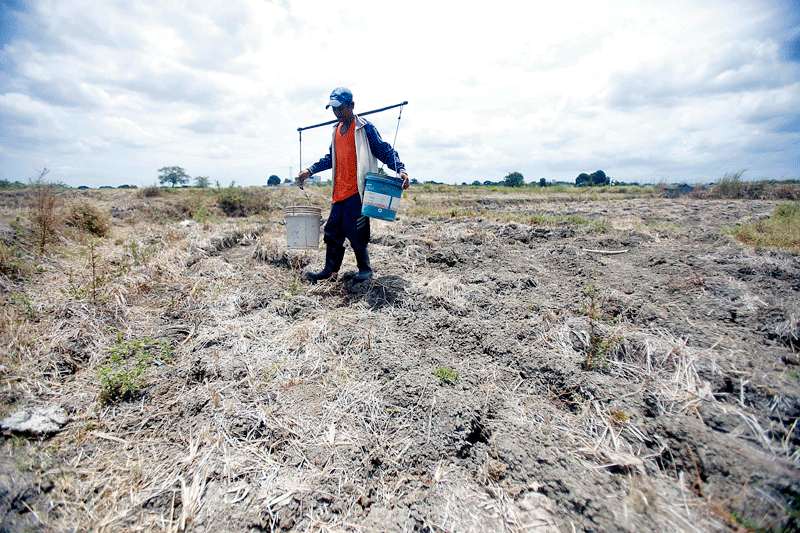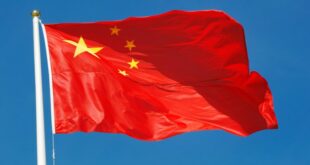
The El Niño phenomenon is now present in the Tropical Pacific, the Philippine Atmospheric, Geophysical and Astronomical Services Administration (PAGASA) on Tuesday said, adding that the people must prepare for the expected dry spell “as early as we can.”
Meanwhile, the Metropolitan Waterworks and Sewerage System (MWSS) said an estimated 632,000 Metro Manila households may be affected by water service interruptions arising from low allocation and lack of rain over the watersheds.
Based on recent climate monitoring and analyses, PAGASA has observed the unusual warming of sea surface temperatures along the equatorial Pacific that was established in March 2023.
“It has further developed into a weak El Niño, which shows signs of strengthening in the coming months,” the agency said.
The El Niño Alert issued last May was upgraded to El Niño Advisory.
“El Niño increases the likelihood of below-normal rainfall conditions, which could bring negative impacts, such as dry spells and droughts, in some areas of the country which may adversely impact the different climate-sensitive sectors such as water resources, agriculture, energy, health and public safety,” PAGASA said.
An enhanced southwest monsoon season or “hanging habagat” may still be expected which may result in above-normal rainfall conditions over the western part of the country.
The climate outlook further suggests that the aggregate impacts of El Niño is expected toward the last quarter of the year and the first half of 2024 bringing dry season in most areas of the country.
The southwest monsoon usually lasts until September, said Ana Liza Solis, chief of PAGASA’s Climate Monitoring and Prediction Section.
The likelihood of water service cutoffs in the metropolis loomed after the National Water Resources Board (NWRB) reduced Metro Manila’s water allocation from Angat Dam to 50 cubic meters per second (cms) and the low level of accumulated rainfall in the watershed, MWSS division manager Patrick Dizon said at a public briefing.
According to the MWSS, service interruptions may last up to 10 hours, most probably in the evening. Dizon said.
He noted that this is less than the 1.5 million affected residents during the water interruptions last April.
Dizon also said the implemented augmentation measures, such as deep well rehabilitation, modular water treatment plant, and recovery of water losses, helped ease the water situation.
“This is in preparation for the coming El Nino. We don’t want to have a high impact on the water interruption of our customers when El Nino comes,” he said.
Meanwhile, the water level in Angat Dam on Monday hit 181.53 meters, close to its minimum operating level of 180 meters.
“So the priority will be the domestic water supply, we’re seeing AGASA’s projection if there will be intensive rain to help raise the water level of our reserves,” Dizon said.
The MWSS, however, vowed that they have ongoing augmentation measures with Maynilad and Manila Water to help meet consumer demands during the dry spell.
“Our promise to the NWRB is that by December, we will recover 100 million liters, but right now, in the middle of the year, we have recovered 38 million liters per day,” Dizon said.
The El Niño phenomenon is characterized by the abnormal warming of sea surface temperature in the central and eastern equatorial Pacific Ocean and below-normal rainfall.
On June 28, the NWRB granted a request by the MWSS for an allocation of 50 cubic meters per second (cms), still above the normal 48 cms allocation, from the Angat-Ipo-La Mesa water system for July.
PAGASA officer-in-charge Esperanza Cayanan said this is an event the government has been preparing for, and it should be the same for people especially water and hydroelectric consumers.
“Although we will not immediately feel the impact of El Niño, we are sure that it has already begun because of the rise of sea surface temperatures in the equatorial Pacific regions. We should take this seriously and prepare for it,” she said.
Among the many effects of the El Niño phenomenon on the country’s climate include below-normal rainfall and lesser chances of monsoon activity.
However, Cayanan also expressed apprehensions over the development of harsher typhoons should they form in the warmer regions of the sea.
“If the waters are warmer, there is a bigger possibility of stronger typhoons forming in the said region. Remember that should a typhoon form in the center equatorial Pacific pass through, we must prepare ourselves,” Cayanan added.
She emphasized that the ongoing El Niño may result in a shortage of water supply from concessionaires due to the lack of rain.
“For the average citizen, the main effects would be the reduction of rainfall from the ones we usually get. Rain is contributory to the water supply which we use at home and lesser rain would lead to the possibility of lesser supply. We should start to conserve water while we still can,” Cayanan said.
A dry spell, which equates to below-normal levels of rainfall for three consecutive months or way below-normal rainfall conditions for two consecutive months, has been predicted to occur in 36 different provinces, while a drought is expected in two.
A dry spell with below-normal rainfall is expected to occur in the provinces of Ifugao, Apayao, Cagayan, Isabela, Nueva Vizcaya, Bulacan, Nueva Ecija, Batangas, Laguna, Rizal, Zamboanga Del Norte, Zamboanga el Sur, Zamboanga Sibugay, Misamis Occidental, Sultan Kudarat, Basilan, Maguindanao, and Sulu.
Meanwhile, way below-normal rainfall dry spells are to occur in Abra, Benguet, Kalinga, Mountain Province, Ilocos Norte, Ilocos Sur, La Union, Pangasinan, Bataan, Pampanga, Tarlac, Zambales, Metro Manila, Cavite, Occidental Mindoro, Palawan, Spratly Islands, Tawi-Tawi.
A high potential for drought has been predicted in Camarines Norte and Southern Leyte.
The weather bureau encourages all government agencies and the general public to take precautionary measures to mitigate the adverse impacts of the southwest monsoon and El Niño.
— Gabriellea B. Parino and Rio N. Araja
*****
Credit belongs to: www.manilastandard.net
 Atin Ito First Filipino Community Newspaper in Ontario
Atin Ito First Filipino Community Newspaper in Ontario






